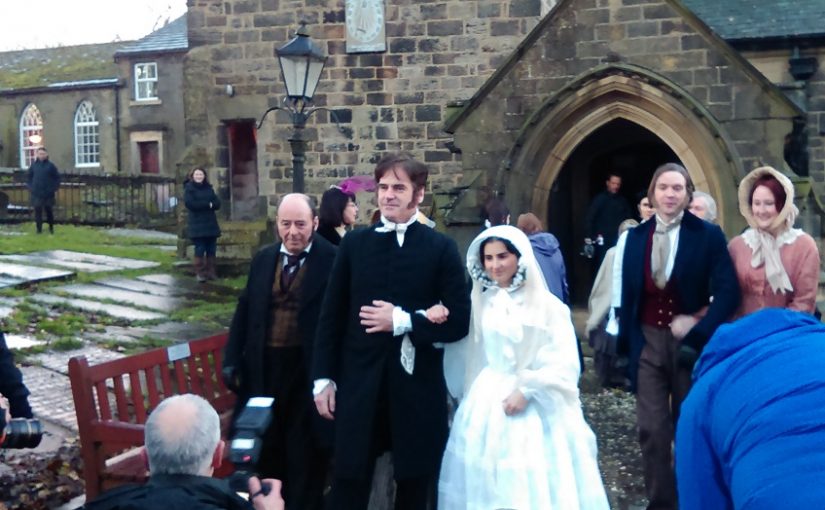What links today’s date, wedding preparations and a diamond wedding anniversary? Why, the Brontës of course as we shall see in today’s blog post. We’ll begin by taking a look at a letter sent by Charlotte Brontë to best friend Ellen Nussey on this day 1854:
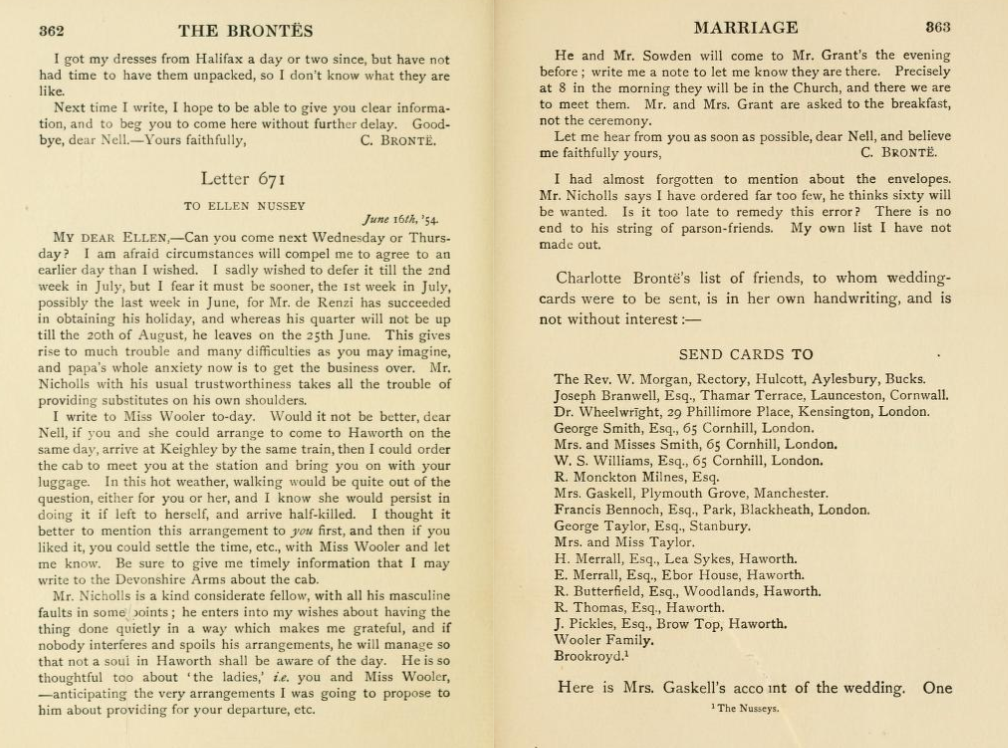
The wedding of Charlotte Brontë and Arthur Bell Nicholls was less than two weeks ago – they were married first thing in the morning on the 29th of June 1854 and the wedding went much as Charlotte had planned. It was a small affair with very few people in attendance, and, incredible as it may seem today, it was kept a secret from the village of Haworth as a whole.
Only a select group of people knew in advance, and a young man named John Robinson found out on the day. He was an apprentice teacher being taught his craft by the village’s assistant curate, and Charlotte’s fiance, Arthur Bell Nicholls. By being in the right place at the right time he became one of only nine people at the wedding ceremony.
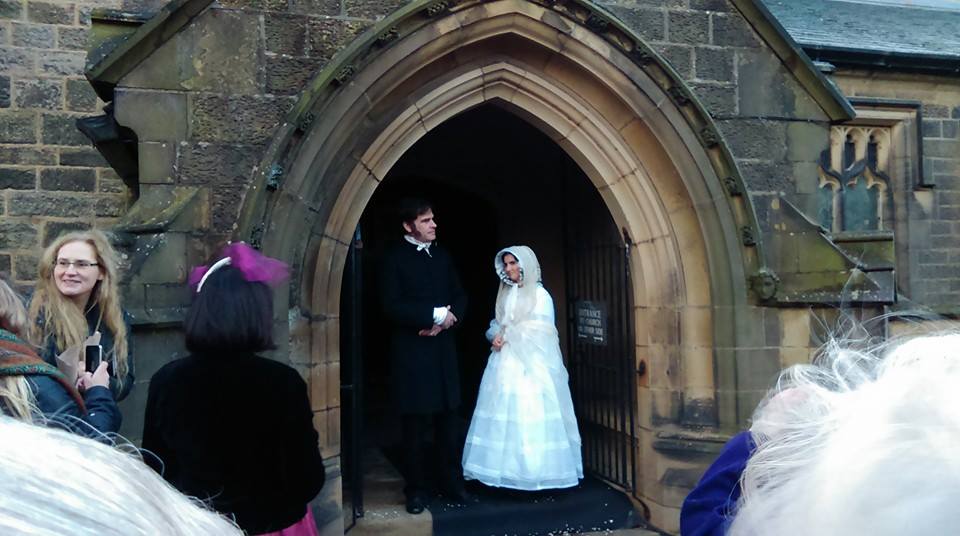
We have looked before at one account Robinson gave of this special day, but he gave another account to the Keighley News on 27th October 1923, as he was approaching his own diamond wedding anniversary! It is another fascinating and illuminating account, so I have reproduced it below:
HAWORTH MAN’S DIAMOND WEDDING
the sixtieth anniversary of the wedding of Mr. and Mrs. John Robinson, which was celebrated at Wombwell, interesting memories of Charlotte Brontë are revived. Mr. and Mrs. Robinson are both 86 years old. Mr. Robinson was born near Haworth, where Mr. Patrick Brontë, the father of the famous writer, was incumbent, and he used every Sunday morning to receive instruction from Mr. Nicholls, who afterwards married Charlotte Brontë. Mr. Robinson was one of the few persons who attended the early morning wedding of Charlotte and Mr. Nicholls. ‘‘I owe a lot to the Brontë family,’’ said Mr. Robinson to a representative of ‘‘The Sheffield Independent,’’ who called upon him to offer him and his wife congratulations on reaching the sixtieth anniversary of their wedding, which they were then celebrating. ‘
I come from Stanbury, where Patrick Brontë, Charlotte’s father, was incumbent, and Mr. Nicholls, whom she married, used to have me up to his lodgings every Saturday morning to give me lessons,’’ he said. ‘‘It was Mr. Nicholls who taught me what love-sickness means. I have heard him moan with anguish when things did not run smoothly.
OPPOSITION TO THE MARRIAGE
‘‘Charlotte’s father was, I think, against the marriage, because, as fame came to her, she, of course, became comparatively well off, and her father seemed to think that Mr. Nicholls was after her money. Charlotte, however, appears to have given him some encouragement. The Brontës had an old and faithful servant, Martha Brown, who was as familiar with her employers as a servant very well can be, and she told me that once when the young couple had had to part, she found Mr. Nicholls with his head against the garden door sobbing as though his heart would break. However, after this separation things seemed to improve for them, and one morning I met the sexton, John Brown, the father of Martha Brown, who said that he had been waiting for me. He told me that Charlotte and Mr. Nicholls were going to get married, and my instructions were to go to the top of a hill and look for the appach of three men. When I saw them I was to run back to the parsonage and tell the folk there that they were coming.
I went to my place and watched, and presently I saw in the distance three persons – Mr. Nicholls, Mr. Grant, and Mr. Sowden. Then I went back to the parsonage, and was told to go as fast as I could for Josh Redman, the old parish clerk. I found him, and told him he had to come to church as quickly as possible. He came immediately. On the way he stopped and said, ‘I’d better lace up my boots,’ and he went to the wall and did so. We hurried to the church. and on the stroke of eight Charlotte entered with her two women friends. There were thus in the church Charlotte, her two friends, the clerk, the sexton, and myself – nine persons in all. I don’t think Mr. Brontë was there.
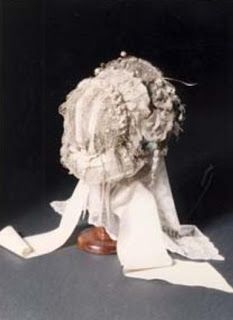
THE WEDDING BREAKFAST ‘
The ceremony was gone through quickly, and, passing out of the vestry, they left the church as they came – by the back door leading into Church Lane, close to the Vicarage. They went to the Vicarage, and then I remember seeing a carriage and pair drive off to the nearest station – Keighley. I went back to the school for my lessons, but I had not been there many minutes when a message came from the Parsonage to say that I was to go for some breakfast. I went and remember having boiled ham, so that you see I had some of Charlotte Brontë’s wedding breakfast, although, of course, not with them. When Charlotte Brontë and her husband returned a lumber room was cleared out at the Parsonage and fitted up as a study for him. He was then curate, and each Saturday morning I went for my lessons as usual. My apprenticeship continued until I was 18. When I said good-bye, Mr. Brontë held my hand for a long time and gave me some good advice. Remember, all this was a long time ago, and we were in a village where we knew little and heard little, and he told me how different I should find things elsewhere. As a parting gift he gave me a portrait of himself, bearing his autograph. The officials of the Brontë Museum at Haworth have begged long and earnestly for that, but I shall not part with it, although I have given them his snuffbox.’
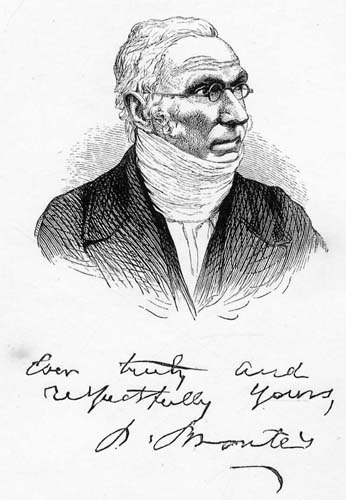
A WONDERFUL WOMAN
Mr. Robinson said that Charlotte Brontë was a wonderful little woman. He had watched her often from the church tower, from whence he could see into the room where she was writing. She was very short-sighted, and when she came into the school to inspect the children’s needlework she had to hold it very close to her eyes.
‘‘I have seen it sometimes suggested that she and her husband were not altogether happy together,’’ went on Mr. Robinson. ‘‘There never was a bigger lie than that. To see them together, arm-in-arm, walking over the moors, and to see the way in which he assisted her in the difficult places, was to be convinced that there never was a couple more completely in love with each other.
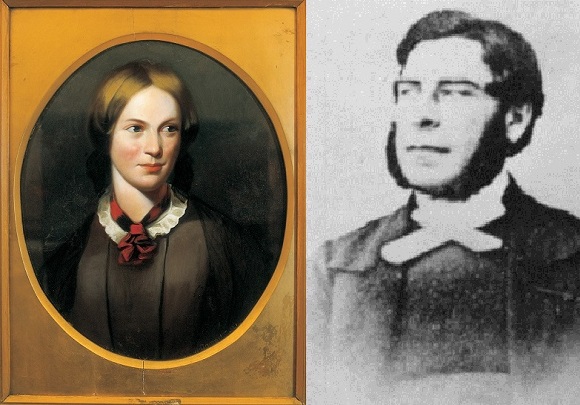
Charlotte’s brother Branwell was different from the rest of the family, being of a more gay disposition. In the local inn he always used to occupy the same chair, and entertain the company, and I remember once that a stranger tried to take a rise out of him. There was on the wall a picture of a man riding a donkey, and the stranger, turning to Branwell, remarked, pointing to the picture: ‘That reminds me of you.’ In a moment Branwell had jumped on to the stranger’s back, and remarked: ‘The likeness is now complete.’’’
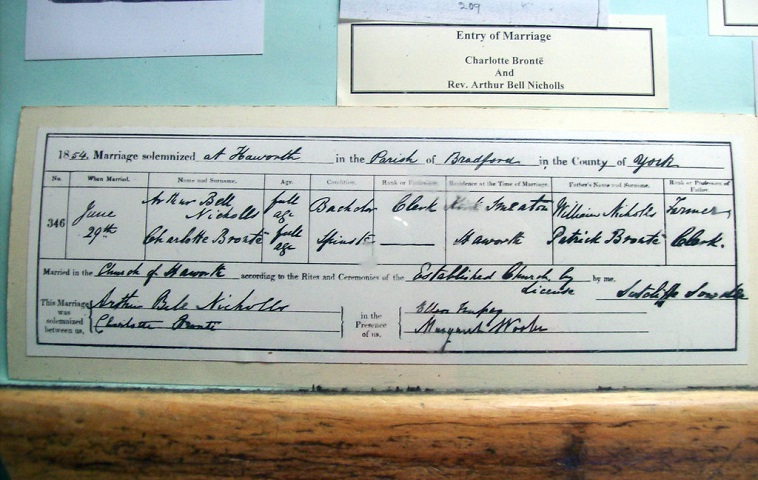
It is lovely to hear a first hand account of how happy Charlotte and Arthur were in their marriage. If you have an anniversary of your own approaching I wish you many happy returns, and I hope to see you next week for another Brontë blog post.
